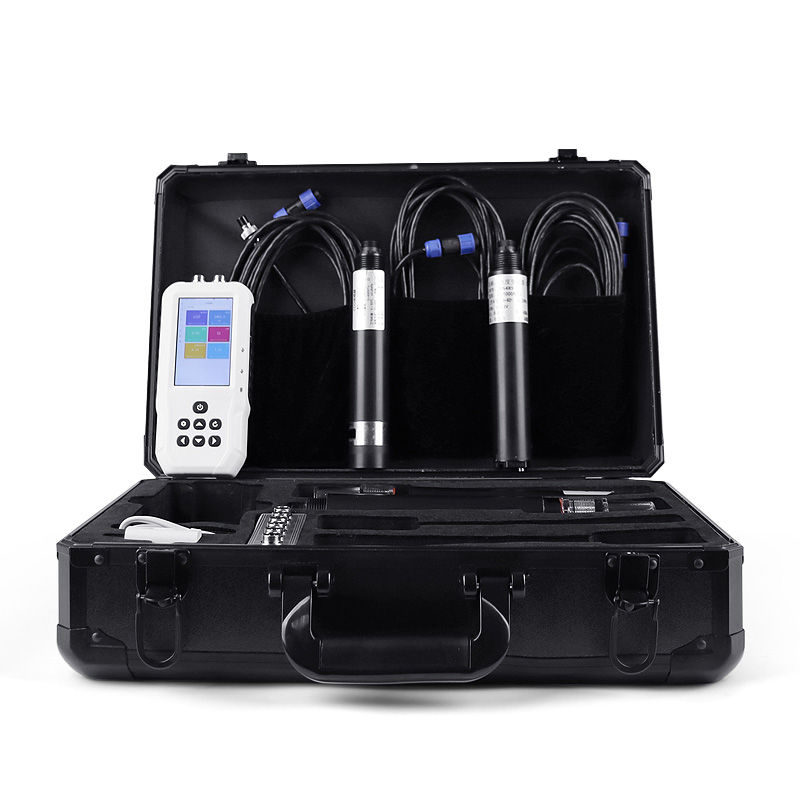Shandong Fengtu IOT Technology Co., Ltd
Sales Manager:Ms. Emily Wang
Cel,Whatsapp,Wechat:+86 15898932201
Email:info@fengtutec.com
Add:No. 155 Optoelectronic Industry Accelerator, Gaoxin District, Weifang, Shandong, China

Sales Manager:Ms. Emily Wang
Cel,Whatsapp,Wechat:+86 15898932201
Email:info@fengtutec.com
Add:No. 155 Optoelectronic Industry Accelerator, Gaoxin District, Weifang, Shandong, China

Model:FT-SS16S
Brand:fengtu
1.Product introduction of Blue-Green Algae Sensor
Blue-Green Algae Sensor is an electrode method water quality analysis instrument that uses fully digital electrode detection to detect blue-green algae parameters of water quality. The instrument is equipped with the self-developed ftiot operating system, which is simple to operate, has stable performance, accurate measurement, and wide detection range. It has a built-in high-capacity rechargeable lithium battery, making it convenient for users to conduct water quality testing at any time in the field or laboratory.
2.Blue-Green Algae Sensor host parameters
| Charging input voltage | 4.5V-5.5V |
| Charging current | <2A |
| screen size | 3.5 inches |
| screen resolution | 480*800☆ |
| screen interface | MIPI DSI☆ |
| USB interface | 2 (Supports external expansion of mouse, keyboard, 4G, etc.)☆ |
| Type-C | 1 (Supports external expansion of mouse, keyboard, 4G, etc.)☆ |
| RS485 | 2 (Supports Modbus, json, asc input, etc.) |
| External sensor supply voltage | 12V |
| External sensor supply current | 1A |
| operating system | ftiot (based on Linux-5.4)☆ |
| CPU | 2*Cotex-A7, 650Mhz☆ |
| RAM | 512M DDR3☆ |
| Flash | 8G-64G |
| OpenGL | ES 2.0☆ |
| Wifi | support |
| 4G | Optional |
| button | support |
| capacitive touch screen | support |
| software architecture | B/S☆ |
| web access | Support☆ |
| MTP mode | Support☆ |
| Multiple terminal login | Support☆ |
| IPV6 | Support☆ |
| Sensor communication method | RS485, TCP, UDP, HTTP☆ |
| Data forwarding method | RS485, TCP, UDP, HTTP☆ |
| Remote SSH | Support☆ |
| remote debugging | Support☆ |
3. Blue-Green Algae Sensor sensor parameters and configuration
| serial number | name | Measuring range | principle | Measurement accuracy | resolution | Configuration | Remark |
| 1 | temperature | 0~50℃ | High-precision digital sensor | ±0.3℃ | 0.01℃ | ||
| 2 | pH | 0~14(ph) | Electrochemistry (Salt Bridge) | ±0.1PH | 0.01 | ||
| 3 | ORP | -1500mv~1500mv | Electrochemistry (Salt Bridge) | ±6mv | 1mV | ||
| 4 | Conductivity | 0~5000uS/cm,0~10000uS/cm | contact electrode method | ±1.5% | 1uS/cm | ||
| 5 | TDS | 0-10000ppm 0-200ppt | contact electrode method | ±1.5%; ±0.1°C | 1ppm 0.01ppt | ||
| 6 | salinity | 0-10000ppm 0-200ppt | contact electrode method | ±1.5%; ±0.1°C | 1ppm 0.01ppt | ||
| 7 | Sludge concentration | 0~20.000g/L | scattered light method | ±5% (depending on sludge homogeneity) | 0.001g/L | ||
| 8 | Turbidity | 0~40NTU (low turbidity) | scattered light method | ±1% | 0.1NTU | Optional | |
| 0~1000NTU (medium turbidity) | scattered light method | ±1% | |||||
| 0~3000NTU (high turbidity) | scattered light method | ±1% | |||||
| 9 | Dissolved oxygen | 0~20mg/L | fluorescence lifetime method | ±2% | 0.01mg/L | ||
| 10 | Ammonia nitrogen | 0-1000.00mg/L (default) 0-100.00mg/l/ (customizable) | Ion selective electrode method | 10% of reading, ±0.5℃ | 0.01mg | ||
| 11 | suspended solids | 0~2000mg/L | scattered light method | ±5% (depending on sludge homogeneity) | 0.1mg/L | ||
| 12 | Residual chlorine | 0~5.00mg/L | Ion selective electrode method | ±5% of reading | 0.01mg/L | The accuracy is best when the flow rate is 0.42m/s-0.85m/s. | |
| 13 | Chloride ion | 0-3500.0mg/L | Ion selective electrode method | ±5% | 0.1mg/L | ||
| 14 | Total hardness | 0~1000.0mg/L | Ion selective electrode method | ±10% of reading | 0.1mg/L | ||
| 15 | cod | 0~500mg/L | UV254 absorption method | ±5% | 0.1mg/L | COD and chlorophyll are equipped with automatic cleaners to prevent biological adhesion and avoid light window pollution to ensure long-term monitoring is still stable; the automatic cleaning time and cleaning frequency can be set, and the power consumption is 0.7W | |
| 16 | Chlorophyll | 0~400ug/L | Fluorescence method | R2>0.999 | 0.01ug/L | ||
| 17 | blue-green algae | 0~200.0Kcells/mL | Fluorescence method | R2>0.999 | 0.1Kcells/mL | ✔ |
Under the conditions of sufficient water vapor, gentle breezes, and a relatively stable atmosphere, once the air close to the ground cools down to a certain degree, the water vapor in it will condense into extremely tiny water droplets. These small droplets will then suspend in the air one after ano...
The Fengtu Visibility Sensor is a professional device used to measure atmospheric transparency, quantifying Meteorological Optical Range (MOR) to provide critical data for traffic safety and weather warning systems.Its mainstream working principle is "forward scattering". The sensor's...
Meteorological visibility refers to the maximum horizontal distance at which a person with normal vision can see and identify a target object against the sky background under current weather conditions (usually measured in meters or kilometers).Transportation is the industry that needs visibility da...
When driving in a tunnel, visibility monitoring is extremely crucial. The interior of a tunnel is relatively enclosed with limited air exchange and is prone to being affected by various factors that can reduce visibility. Such situations as bad weather, the accumulation of vehicle exhaust fumes, and...